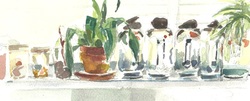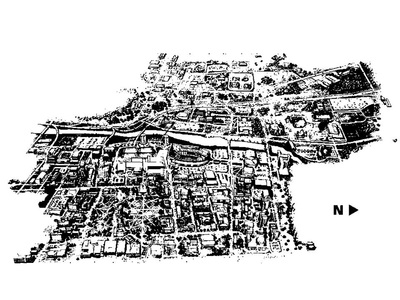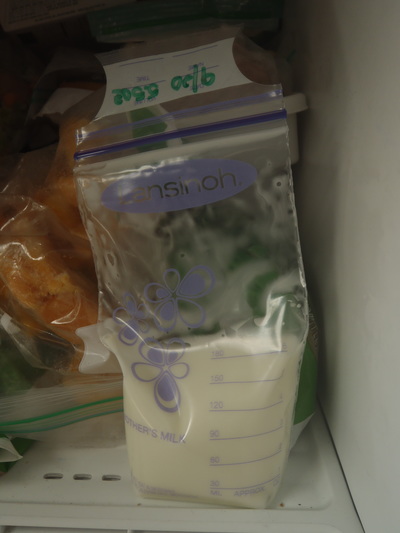 When my grandparents moved out of their house, I remember looking around my grandpa's office and noticed that he had cataloged all his books in the type of card system found in libraries before online catalog systems. My grandma stuck little notes as to the provenance to every piece of family furniture, photos, jewelry. As I (and my grandma) got older, she would gift family heirlooms to me (and others). I would always find a little note with her scrawling cursive detailing where she got the piece and any notable information. My dad has mentioned that he knew it was time to help my grandparents make some changes when he noticed my grandpa's organizational tendencies waiver. These collections were all over their house - a spoon collection on a wooden rack hanging in the kitchen, a display of antiques and family photos in the guest room, the complete repertoire of an author who lived and/or visited Starkville. In my response to the collections questionnaire, I did not indicate any specific items collected, but had more to say about my methods: "I organize these things by how they work together aesthetically and emotionally. I group things according to memory." I found in this thinking that rather than organizational tendencies, I have curatorial tendencies. I cluster items around our home and think about what type of environment that I would like to live in, that I would like to raise my kids in, and what sort of place I want people to visit. It is an ideal of course; some days there is no semblance of thoughtful arrangement as the kids' toys explode into every room in the house. Thinking through collectingIn an Urban Spaces course, we were asked to keep some kind of chronological record of our thoughts and experiences in the form of a journal and/or collection. I used a hybrid of both as I explored the breast pump as a material artifact in an urban space. I was nursing my firstborn at the time, and, as a graduate student, fell somewhere between the allowances made at the university for working mothers on staff/faculty, 'traditional' student norms, and defining myself as a stay-at-home/working mom. This dichotomy continues for me, as I struggle to identify with both. My journal/collection consisted of documenting my daily experiences as a nursing mother/student by collecting images, maps, and breastmilk bags, exploring the tensions between public and private spaces for mothering, and working on my own identification as a working and stay-at-home mom in a (post)feminist context. While a material culture investigation of motherhood via breastfeeding may offer little to an exploration of my grandma's postcard collection, the process of thinking through the act of collecting offers a method for connecting to my own curatorial tendencies. Revisiting a collectionWhat do I do with someone else's collection? Grandma inherited this collection from her aunt Laura. She had no direct relationship with many of the postcards. She did not purchase them, she did not visit the places they depict, she did not receive them in the mail. Yet, she built on that collection and continued to until she stopped traveling and corresponding. Even after she went to the nursing home, she sent postcards. I still have the last postcard I received from her. I cannot ask her why she collected postcards. I don't have most of the stories of places or people associated with the cards. I know that there are larger collections of the places she visited, lived, or had pen pals. Although I do not have those particular boxes of cards, I assume she has a number of cards from Prague, where she had a life-long pen pal whom she visited, accompanied by my sister and mom in the 1990s.
I am beginning to view this collection as a material culture investigation of family history, particularly regarding issues of identification, belonging and home. Through the quantity and location of cards, a map begins to form of family presence. I can see the connection to place. It is not an accurate picture, though. There are only two or three cards from Norwalk, Ohio, where Grandma and Grandpa lived for twenty years. My guess is that she mailed twenty times that to her numerous correspondents. But perhaps those holes in-between places are actually quite significant.
1 Comment
Stacy E Holden
2/5/2016 06:31:38 pm
As a historian, I am intrigued. As I read this post, I think about your response to the questionnaire on the organization of items collected. What would happen, I wonder, and it's a fascinating thought, if I did not put together a history book based on chronology, but instead on a series of ideas and a sense of "how they work together aesthetically and emotionally." As I grapple now--as you do--with the intersection of history and life story--I find this invigorating.
Reply
Leave a Reply. |
Ruth M. SmithCommunity arts educator and researcher. Drinking coffee. Home educating. Making art. Listening intentionally. Categories
All
Archives
February 2022
|




 RSS Feed
RSS Feed
